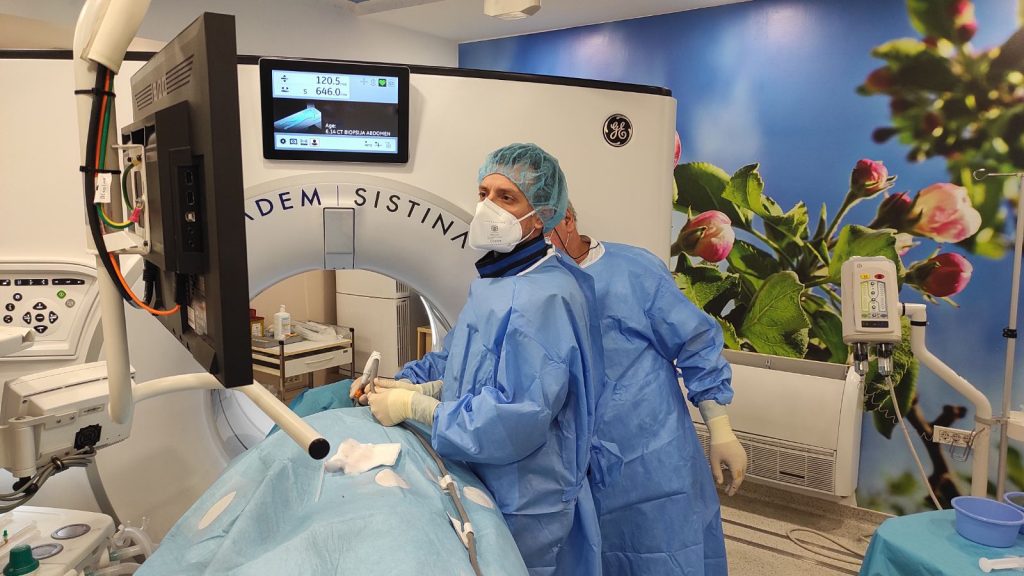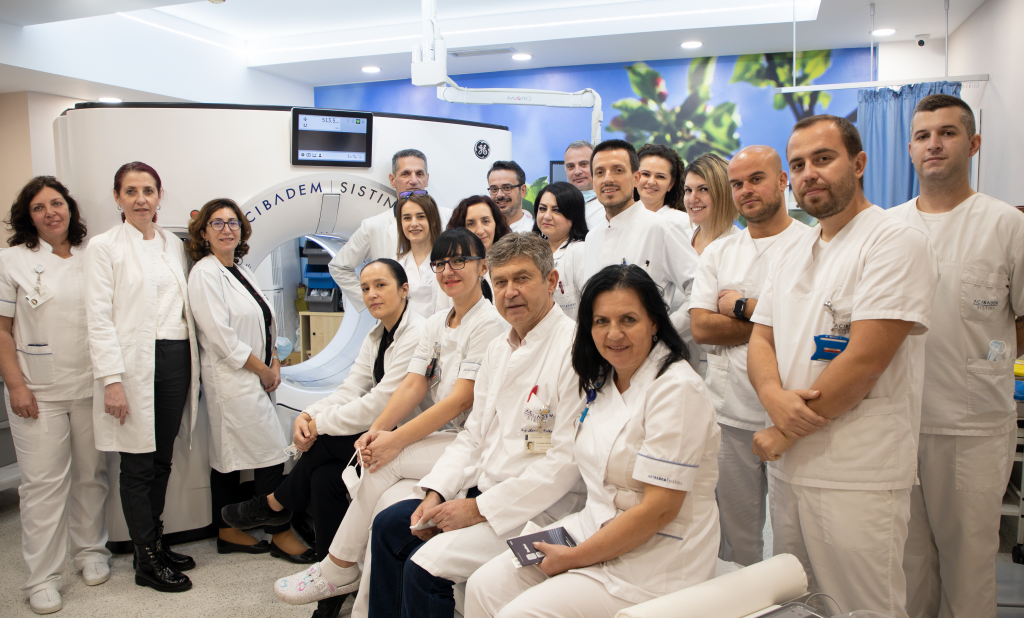INTERVIEW: PROF. ALEKSANDAR GJORESKI, SIRNM PRESIDENT
We spoke to Prof. Alexandar Gjoreski, President of CIRSE’s newest group member, the Society of Interventional Radiology of North Macedonia (SIRNM).
CIRSE: Can you tell us how your society began?
Gjoreski: Forming this new society for interventional radiology was somehow a natural way of things. It happened alongside the process of developing several centres for IR in North Macedonia. Though there are not so many IRs in North Macedonia, we definitely will be much more organized if we work together as a group. I was formerly the president of our national radiologic association, which was a great experience for me, and this gave me the idea to establish a dedicated IR society.
CIRSE: SIRNM recently became a CIRSE group member – How would you like to see the two societies working together?
Gjoreski: For us, it is an honour and pleasure to be a CIRSE group member. North Macedonia is a part of Europe and this is where we belong. I think that SIRNM can benefit so much from this opportunity because all our members will directly become CIRSE members and will enjoy all the benefits that go with it, like the reduced fees, subcommittee memberships, and the opportunity to establish new friendships and meet new colleagues from all around the globe. CIRSE has always been open family, and that remains true; one of its main achievements is that it helps to improve the quality of IR procedures throughout the world.

CIRSE: Could you tell us about the clinical guidelines and undergraduate training for IR in North Macedonia?
Gjoreski: We are trying to follow international clinical guidelines as much as it is possible for every aspect of IR, like the PAD guidelines, then the guidelines for all non-vascular and oncological procedures, and to incorporate them into our local system and our practice. We also rely very much on the CIRSE standards of practice documents, which make our lives easier every day.
Undergraduate training for IR in our country is at a low level, I would say. This is mainly because, until recently, medical students were not introduced by their teachers to the existence of and the opportunities that interventional radiology offers. But luckily this is also changing, since now many of us who deal with IR are part of the university and we are trying very hard to popularize our specialty not only on the student level but also through the radiology residents, which is even more important.
CIRSE: How are North Macedonian students encouraged to pursue IR as a career?
Gjoreski: I can talk about myself and my colleagues from the department. From the first day that I have students for practical work in radiology, I try to bring them into the angiography suite, have them accompany me when I perform US or CT-guided procedures, speak with them and try to explain how our specialty has a very important clinical role in the diagnosis and treatment of many diseases.
Happily, I have many students now that have come back to me after graduation to ask for IR clinical practice even residency. In my opinion this is the best and the most natural way of getting more and more youngsters to specialize in interventional radiology. It is so simple; we have the best specialty in the world
CIRSE: How does SIRNM inform patients about IR treatments? How aware of IR is the general public in North Macedonia?
Gjoreski: Unfortunately, at the beginning and even now, we still need to inform our colleagues from other specialties regarding our treatments. Very often I meet doctors who ask me, “Listen I have a patient with this and this condition … could you do something?”
For patients, it’s getting a bit easier – we translated the CIRSE patient information leaflets for procedures into our language and have them in every hospital with an IR department. Then we use social media and networks, other societies, and sometimes even TV in order to translate our work and our message to the general population. The process is hard work, but it is very important.

CIRSE: How many IRs are there in North Macedonia? Has this number changed in recent years?
Gjoreski: We have around 20 IRs and, let’s say, 10 residents who are interested in doing at least some IR procedures.
The number is increasing slowly and, in my opinion, the main reason for this is that we have now several young professors that deal with IR, and the radiology residents are obliged to do a rotation in interventional radiology departments. It’s now easier for someone to find themselves doing manual IR work and helping patients directly. When this happens once, then they either adore it or they say “this is not for me!”
CIRSE: In what ways does SIRNM currently collaborate with other IR societies on a regional and/or global level?
Gjoreski: We are a brand-new society, so our first goal would be to establish several meetings and/or workshops on different IR topics in North Macedonia, and we will invite colleagues from neighbouring countries like Serbia, Bosnia and Herzegovina, Croatia, Albania, Greece, Bulgaria, Turkey, Slovenia and others to meet people and share experiences. So far, we already have many dear friends in these countries. It’s a start! We will try to further enlarge the circle through western Europe and other parts of the world.
CIRSE: What are the biggest challenges for IR in North Macedonia?
Gjoreski: There are several crucial challenges for IR in North Macedonia, such as:
- Recognition of our specialty and making other clinicians aware of our procedures and all that we can do. We also need to make the general population aware of us, and on this particular topic we have already made some progress.
- Having a separate subspecialty in IR as a continuum education of general radiology training; this has already been achieved with the great efforts of several doctors.
- Further strengthen our community by increasing the number of young doctors willing to work in IR.
- Getting the same rights as all the other clinical specialties, the right to have our own clinics and the opportunity to admit and discharge our patients.
- Improve the field of interventional oncology in North Macedonia.
CIRSE: From an IR perspective, what does multidisciplinary teamwork look like in North Macedonia?
Gjoreski: Only in few hospitals do we have real tumour boards, vascular boards and proper multidisciplinary team meetings. This is something that is underestimated and underused in our country in general. As an IR, I am a strong believer that every single complex medical condition should require a decision to be made by several doctors from different disciplines, and this is even more important for malignant diseases.
I have the luck to work in a clinical hospital that has very nice multidisciplinary tumour boards for several different topics, and we are in a process of forming a dedicated cardiovascular MDT for peripheral vascular and aortic disease.
IRs are now more and more often “active” members in the MDTs and our voice has become stronger in the last few years. I think that this is the case everywhere because the medical world is going towards a “minimally invasive” pathway in general.
CIRSE: How do you envision the future of IR, both in North Macedonia and globally?
Gjoreski: As I have mentioned before, there is no doubt that we have the best specialty in all of medicine. Maybe I am a bit superstitious on this topic, but it is really unbelievable how our discipline is growing so fast. One should be very careful what to choose and what to deal with, because in near future I think there will be enough of us that all of us will have to decide which procedures we want to specialize in.
I want to highlight the fields of interventional oncology and embolization in particular, because I think that these two separate fields will remain always and only in the hands of interventional radiologists.
Just to conclude, the future of IR is very very bright!